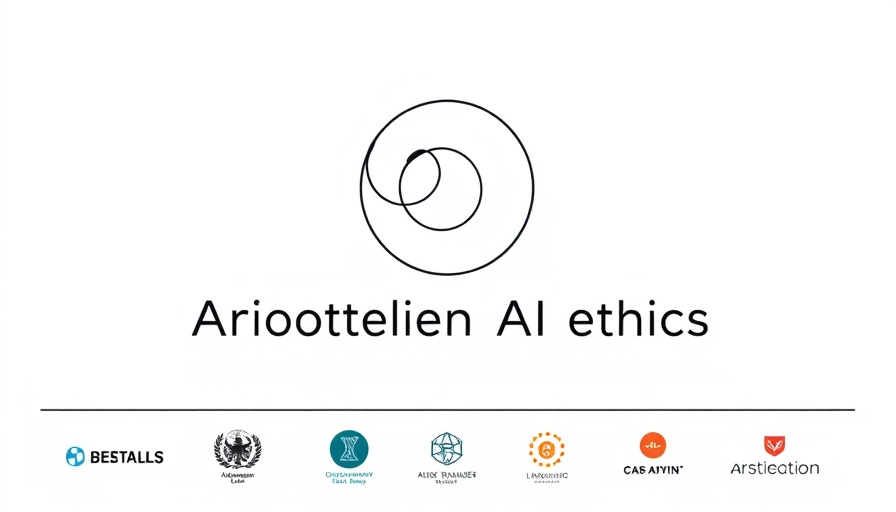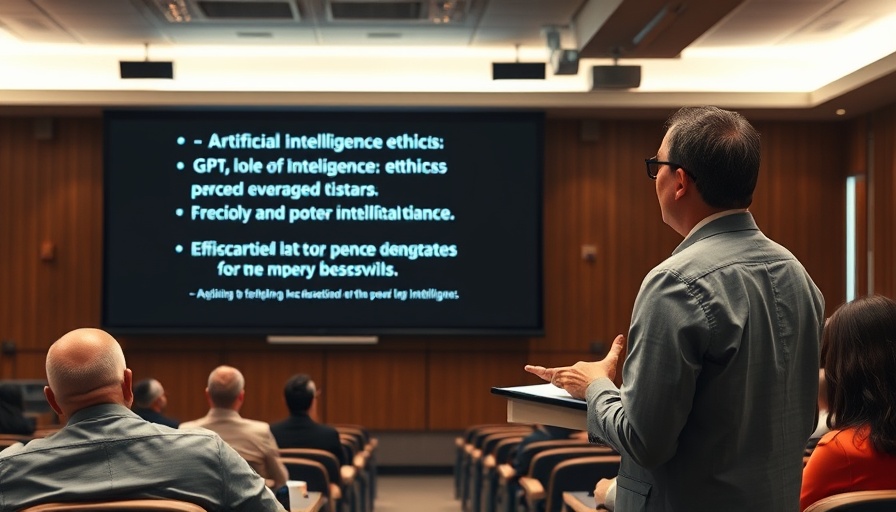
The Tipping Point in AI Regulation: Are We Holding Innovation Back?
As the discussion surrounding AI regulation intensifies globally, a thought-provoking colloquium titled "The False Choice Between Digital Regulation and Innovation" has recently emerged as a pivotal conversation starter. The premise set forth by Anu Bradford, a prominent academic, emphasizes that regulation doesn't have to be seen as a hindrance to innovation, but rather as a beneficial force that can shape the technological advancement landscape. Bradford crafts a nuanced narrative that seeks to reconcile the ongoing debates around the protection of digital rights with the necessity for an innovative tech ecosystem.
In 'Ethics in AI Colloquium - 'The False Choice Between Digital Regulation and Innovation', the discussion dives into the interplay of regulatory practices and technological innovation, revealing insightful perspectives that inspire deeper exploration on our end.
Striking the Balance: Regulation vs. Innovation
At the heart of this debate lies a critical question: can effective regulation coexist with robust innovation? Internationally, the U.S. and Europe have crafted differing approaches to technology regulation. Europe has embraced a rights-driven regulatory model, epitomized by the General Data Protection Regulation (GDPR), which emphasizes individual autonomy and protection against corporate overreach. In contrast, U.S. practices tend to prioritize market efficiency, often leading to minimal oversight. This poses a potential risk amid growing concerns regarding data security, privacy, and the power held by tech monopolies.
Bradford stresses that painting the regulatory environment as strictly a hindrance to innovation might unjustly overlook potential synergies. With regulations like the GDPR, there's evidence to suggest that consumer trust has increased, leading to a healthier market where ethical data practices could eventually inspire innovative products.
Cultural Attitudes Towards Risk: A Key Factor
Another layer to this discussion involves deeply ingrained cultural attitudes towards risk-taking across different regions. In many European countries, there's a prevailing sense of prudence, often regarded as a virtue. However, this may inadvertently stifle risk-taking – a critical ingredient for innovation. American culture, on the other hand, fosters an environment where failure is seen as a stepping stone to success, thus encouraging entrepreneurship.
Bradford's insights illuminate the necessity for Europeans to pivot their cultural narratives around failure and risk, creating an ecosystem that supports entrepreneurs and startups without the fear of catastrophic setbacks. Celebrating failures, as seen in American entrepreneurial narratives, could pave the way for a more vibrant innovation culture in Europe.
Global Considerations: The Bigger Picture
The geopolitical landscape is another crucial aspect of this discussion. As global tensions rise, particularly between the U.S. and China, there’s an increasing temptation for nations to lean towards protectionism. The future of AI regulation could be at stake; countries may prioritize national dominance over collaborative global solutions. Bradford suggests that, despite the competitive environment, areas such as military applications and existential risks warrant international cooperation rather than isolated regulations.
This global perspective raises significant concerns about whether countries like the U.S. and China will prioritize ethical standards in AI development or focus solely on market dominance. To mitigate risks associated with military AI, a joint regulatory framework encompassing both U.S. and Chinese interests is essential to prevent potential mishaps that could arise from unregulated innovation.
The Role of Investors: Shaping Responsible Innovation
The role of investors in this landscape cannot be overstated. As the stewards of considerable capital resources, investors possess the ability to shape innovation routes based on ethical considerations and long-term sustainability. With over $30 trillion of assets committed to ethical AI initiatives under the Lordsman’s Ethical AI initiative, there lies a significant opportunity to drive responsible practices. Investors interested in safeguarding their portfolios should increasingly demand ethical compliance from tech companies, prompting innovations that align not just with market preferences but also with social responsibility.
Final Thoughts: A Collaborative Path Forward
The fundamental takeaway from the recent colloquium is that the regulation-innovation dynamic is not as binary as it may seem. By acknowledging the multifaceted influences on technological advancements, including cultural attitudes, geopolitical considerations, and the pivotal role of investors, we can cultivate an environment conducive to both ethical standards and innovation. As stakeholders in this evolving landscape, from consumers to investors, we all play a role in charting a collective path that prioritizes not only technological growth but also a commitment to responsible and inclusive innovation.
As we embrace this multifaceted narrative, let’s reflect on how we can take an active part in shaping a future where innovation and regulation coexist for a greater good.
 Add Row
Add Row  Add
Add 




 Add Row
Add Row  Add
Add 

Write A Comment